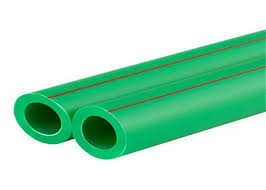Nov . 29, 2024 12:52 Back to list
Transitioning from HDPE to PVC for Reliable Service Solutions in Various Applications
Transition Coupling From HDPE to PVC Service
The evolution of piping systems has seen notable advancements in material technologies, notably in the use of High-Density Polyethylene (HDPE) and Polyvinyl Chloride (PVC). These materials have carved out significant niches in various applications, each with their own inherent advantages and challenges. Transition coupling serves as a crucial link in connecting different types of piping systems, particularly when the shift is necessary from HDPE to PVC. This article explores the significance, methods, and considerations involved in employing transition couplings for HDPE to PVC services.
Understanding HDPE and PVC
HDPE is known for its high tensile strength, flexibility, and resistance to impact, making it an ideal choice for water supply, irrigation, and sewer applications. Its lightweight nature and ease of installation further contribute to its widespread use in the construction and utility sectors. Conversely, PVC is favored for its durability, chemical resistance, and low flammability, making it a preferred material for plumbing, drainage, and electrical conduit applications.
However, there are scenarios where transitioning from HDPE to PVC is necessary, such as changes in project specifications, regulatory requirements, or the need for a different type of piping network. In these instances, transition couplings become indispensable.
The Role of Transition Couplings
Transition couplings serve as connectors that facilitate the seamless joining of HDPE to PVC pipes. These fittings are engineered to accommodate the unique properties of both materials, ensuring a leak-free and robust connection. The use of transition couplings is critical in maintaining the integrity and efficiency of fluid transport, reducing the risk of leaks and failures that could lead to costly repairs and downtime.
Key Considerations in Transition Coupling
transition coupling hdpe to pvc service

1. Material Compatibility When selecting transition couplings, it's crucial to consider the material compatibility. The coupling must be designed to handle the differing thermal expansion and contraction rates between HDPE and PVC. High-quality materials and proper adhesive or joining methods are necessary to achieve a reliable connection.
2. Pressure Rating The pressure rating of both the HDPE and PVC pipes needs to be considered when choosing a transition coupling. It’s essential to ensure that the coupling can withstand the maximum operating pressure of the system to prevent failures.
3. Installation Method Transition couplings can be installed using various methods, such as fusion welding or mechanical joints. The choice of method should be informed by the application requirements, available tools, and the skill level of the installation crew. Proper training and adherence to manufacturer guidelines are imperative to ensure a successful installation.
4. Environmental Factors The operating environment plays a significant role in the longevity and effectiveness of the transition coupling. Factors such as soil conditions, temperature fluctuations, and chemical exposure should be assessed. Choosing couplings resistant to environmental stressors will contribute to the overall durability of the piping system.
5. Regulatory Compliance Many regions have specific regulations regarding the installation of piping systems. Transition couplings should comply with local building codes and standards to avoid potential legal and safety issues.
Conclusion
Transition couplings are vital components when connecting HDPE and PVC piping systems. By understanding the properties of both materials and the functional requirements for effective coupling, engineers and contractors can ensure the reliability and efficiency of their installations. With careful consideration of material compatibility, pressure ratings, installation methods, environmental impacts, and regulatory requirements, the transition from HDPE to PVC can be executed seamlessly. This not only enhances the overall performance of the piping system but also contributes to a sustainable and resilient infrastructure. As technology continues to evolve, the development of more advanced transition couplings will undoubtedly play a pivotal role in the future of piping systems, promoting flexibility and innovation in various service applications.
-
Durable DN500 HDPE Double Wall Corrugated Drain Pipes
NewsAug.06,2025
-
32mm HDPE Pipes Coil: Durable & Flexible Water Supply
NewsAug.05,2025
-
DN100 PVC Well Casing Pipes | Durable Corrosion-Proof
NewsAug.04,2025
-
HORON 25mm PPR Plumbing Pipes - AI-Enhanced & Reliable
NewsAug.03,2025
-
HORON 25mm PPR Pipes - AI-Optimized Plumbing Excellence
NewsAug.02,2025
-
Premier HDPE Sprinkler Pipe Manufacturers | Durable Solutions
NewsAug.01,2025

